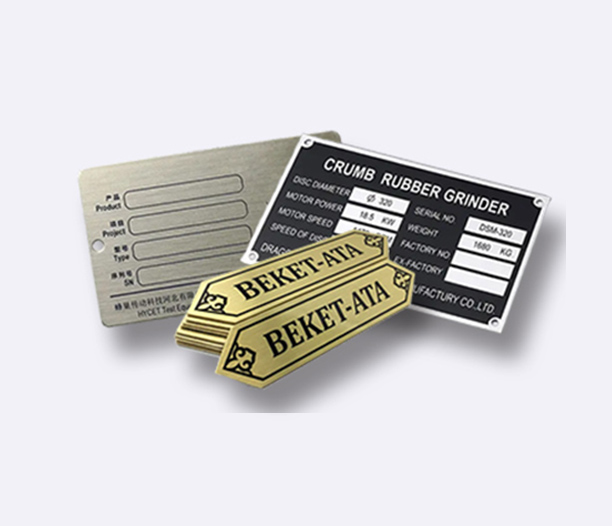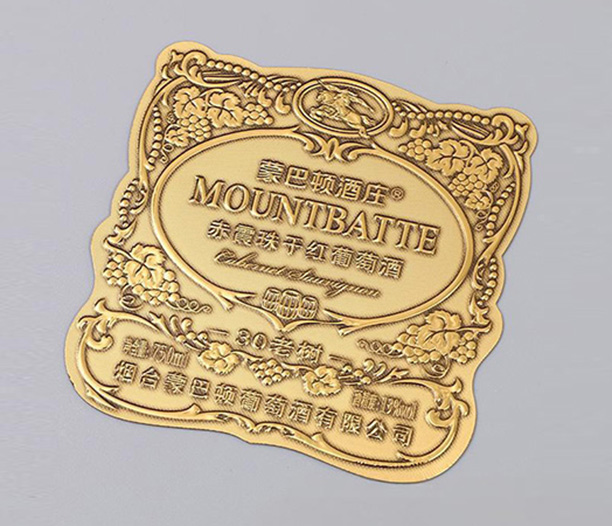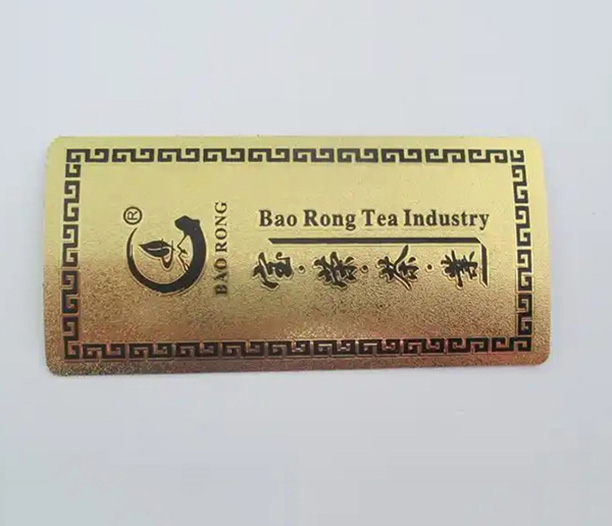In the worlds of industry, commerce, and personal property, identification is paramount. Among the myriad options available, the stainless steel name plate stands out as a premier choice for those seeking a blend of unparalleled durability, professional aesthetics, and long-term value. These versatile markers are far more than simple labels; they are permanent, resilient assets used to convey critical information, enforce branding, and ensure safety across countless applications. From the serial number on a piece of heavy machinery to the elegant signage on a corporate building, stainless steel name plates offer a solution that withstands the test of time and the elements. This comprehensive guide will delve into the essential aspects of these durable products, exploring their key characteristics, diverse applications, manufacturing processes, and the common questions surrounding their use. Whether you are an engineer, a business owner, or simply someone in need of a high-quality identifier, understanding the intricacies of the stainless steel name plate will empower you to make the best decision for your project.
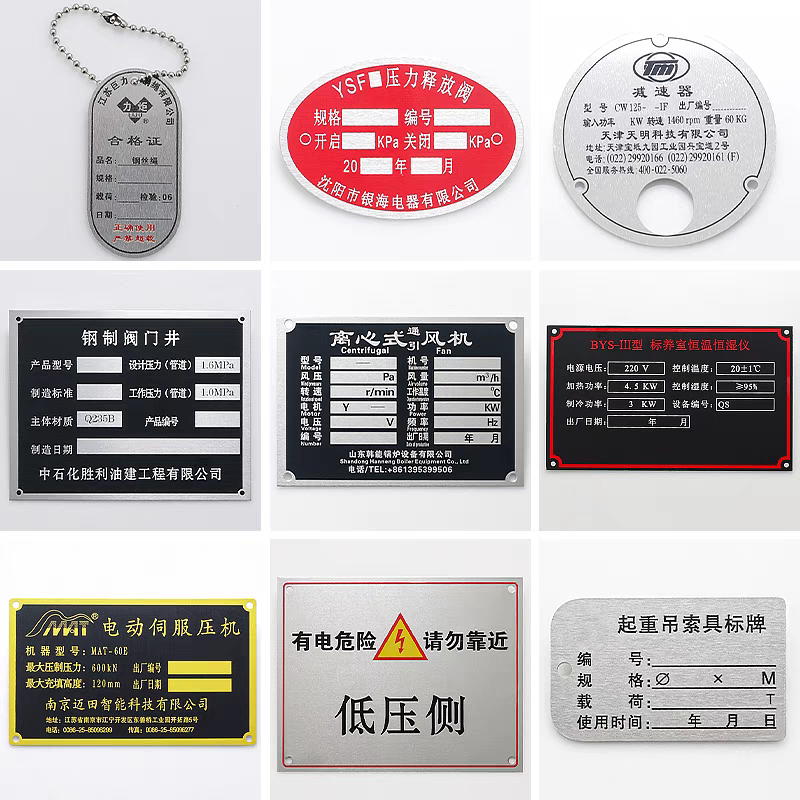
The Defining Characteristics of Stainless Steel Name Plates
Why has stainless steel name plate technology remained a top choice for decades? The answer lies in the inherent properties of the material itself. Stainless steel is an iron alloy containing a minimum of 10.5% chromium, which gives it its remarkable corrosion-resistant qualities.
Exceptional Durability and Longevity: The primary advantage of a stainless steel name plate is its incredible strength and resistance to wear and tear. It is highly resistant to impact, abrasion, and vibration, making it suitable for harsh environments where other materials would fail. Unlike plastic or painted labels, it won't crack, peel, or become brittle over time.
Superior Corrosion Resistance: The chromium in stainless steel forms an invisible, passive layer of chromium oxide on the surface when exposed to oxygen. This layer prevents rust and corrosion, protecting the name plate from moisture, chemicals, salt spray, and extreme temperatures. Grades like 304 and 316 are specifically chosen for their enhanced resistance in marine and chemical processing applications.
Professional and Timeless Aesthetics: A stainless steel name plate projects an image of quality, permanence, and professionalism. Its sleek, modern appearance can be finished in various ways—from a brushed satin sheen to a mirror polish—to match any decor or brand identity. This aesthetic versatility ensures it looks as good on a hospital door as it does on a factory floor.
Easy Maintenance and Cleanliness: The non-porous surface of stainless steel is exceptionally easy to clean and sterilize. A simple wipe with a damp cloth is often all that's needed to keep it looking new. This hygienic property makes it indispensable in medical, pharmaceutical, and food processing industries.
Legibility and Permanence: Information etched, engraved, or stamped into a stainless steel name plate is permanent. It cannot be easily altered or removed, ensuring that crucial data like serial numbers, safety instructions, and electrical ratings remain readable for the entire lifespan of the equipment it's attached to.
Common Applications and Uses
The utility of the stainless steel name plate spans nearly every sector. Its combination of functionality and form makes it an indispensable component in:
Industrial and Manufacturing: Used as asset tags, data plates, and instruction labels on machinery, control panels, and tools. They withstand oil, grease, and solvents common in factory settings.
Architectural and Building: Serving as room number plates, directory signs, memorial plaques, and decorative signage on buildings. They add a touch of elegance while enduring outdoor weather.
Marine and Offshore: Due to their excellent resistance to saltwater corrosion, stainless steel name plates are used on ships, docks, and offshore platforms for equipment identification and safety signage.
Medical and Laboratory: As equipment identification tags, instrument labels, and door plaques in sterile environments where cleanliness and chemical resistance are non-negotiable.
Aerospace and Defense: Meeting stringent requirements for durability, legibility, and performance under extreme pressure, temperature, and stress.
Corporate and Branding: Used for desk name plates, award plaques, and company logos, projecting a strong and lasting brand image.
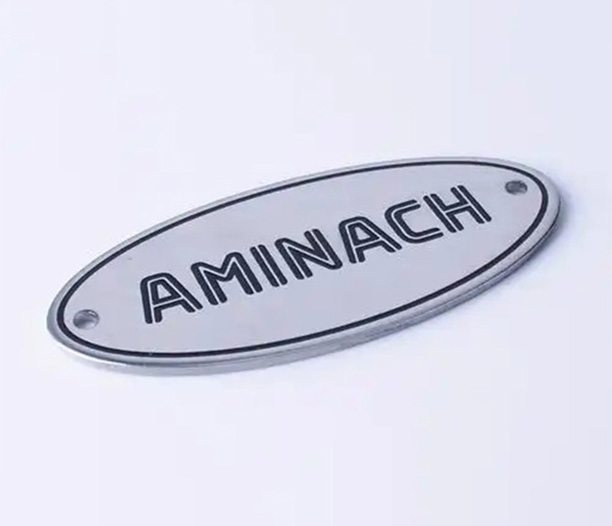
The Manufacturing Process: How Are They Made?
Creating a high-quality stainless steel name plate involves several precise manufacturing techniques. The chosen method often depends on the desired look, quantity, and budget.
Photo Etching/Chemical Milling: This process is ideal for complex designs and thin materials. A photoresist is applied to the stainless steel sheet and exposed to UV light through a photographic tool. The unexposed areas are washed away, and the metal is then sprayed with a corrosive chemical (etchant) that eats away at the unprotected areas, leaving a precise, burr-free design.
Laser Engraving/Marking: A high-powered laser beam vaporizes the surface of the metal, creating a permanent, high-contrast mark. Laser engraving is incredibly precise, fast, and perfect for serialization, barcodes, and complex logos. It allows for both deep engraving and surface annealing (black marking).
Stamping/Pressing: Used for high-volume production, this method involves using a hardened steel die to press the design into the metal under tremendous force. Stamping creates a deep, durable indentation that is highly resistant to wear.
Screen Printing: Ink is forced through a fine mesh screen onto the surface of the plate. While effective for adding color, printed information is not as permanent as engraved or etched copy and may wear off over time, especially in abrasive environments. It is often used in conjunction with a protective overlaminate.
Finishing Touches: After the information is applied, plates can be finished in various ways: brushed, polished, bead-blasted (matte), or colored through anodizing or applying enamel infill. Attachment methods are also crucial, with options including adhesive backing, holes for screws/rivets, or welding.
Common Problems and FAQs About Stainless Steel Name Plates
Even with a superior product like a stainless steel name plate, questions and issues can arise. Here are some of the most common problems and their solutions.
1. Will a stainless steel name plate rust?
While highly resistant, stainless steel is not entirely stain-proof. Under specific conditions, such as prolonged exposure to harsh chemicals, saltwater, or in environments where iron particles are present (e.g., a steel grinding shop), surface rust or "tea-staining" can occur. This is often a surface contamination issue rather than the core metal rusting.
Solution: Specify a higher grade of stainless steel like 316 for highly corrosive environments. Ensure regular cleaning with fresh water and a mild detergent. Avoid using hydrochloric acid or abrasive cleaners that can damage the protective oxide layer.
2. How do I clean and maintain my name plate?
Maintenance is straightforward but important for preserving appearance.
Solution: For routine cleaning, use warm water, a soft cloth, and a mild soap. For tougher stains or light discoloration, a dedicated stainless steel cleaner can be used. Always wipe in the direction of the grain (brushed finish) to avoid scratching. Avoid steel wool or abrasive pads.
3. The information on my plate is wearing off. Why?
This is almost exclusively an issue with screen-printed or painted plates, not with engraved or etched ones.
Solution: For permanent legibility, choose a manufacturing process where the information is physically removed from the metal (etching, engraving, stamping). If color is needed, opt for etched/engraved plates with enamel infill that is baked on for durability.
4. What is the best way to attach a stainless steel name plate?
A poorly attached plate is a liability. The best method depends on the surface material and environment.
Solution:
Adhesive: High-performance industrial-grade VHB (Very High Bond) tape is excellent for smooth, flat surfaces and is vibration-resistant.
Mechanical Fasteners: Screws, rivets, or bolts provide the most secure, permanent attachment, especially for irregular surfaces or high-vibration areas. Ensure fastener material is also corrosion-resistant (e.g., stainless steel screws).
Welding: For a truly permanent installation on metal surfaces, plates can be manufactured with welded studs on the back.
5. How do I choose the right grade of stainless steel?
The two most common grades are 304 and 316.
Solution:
Grade 304 (A2 Stainless): The standard, all-purpose grade. It offers excellent corrosion resistance for most indoor and general outdoor applications.
Grade 316 (A4 Stainless): Contains molybdenum, which significantly increases its resistance to chlorides and acids. It is the preferred choice for marine, coastal, and chemical processing environments.
6. The plate doesn't stick or falls off. What happened?
Adhesive failure is usually due to improper surface preparation or choosing the wrong adhesive for the environment.
Solution: The mounting surface must be clean, dry, and free of dust, oil, or wax. Use a solvent cleaner like isopropyl alcohol to prepare the surface. For applications involving extreme temperatures or outdoor weathering, ensure the adhesive is rated for those conditions.
A stainless steel name plate is far more than a simple tag; it is a long-term investment in clarity, safety, and branding. Its unmatched durability, resistance to harsh conditions, and professional appearance make it the superior choice over plastic, aluminum, or printed alternatives. By understanding its properties, applications, and manufacturing processes, and by being aware of common pitfalls, you can specify and use these plates with absolute confidence. Whether you are identifying a critical piece of infrastructure, honoring an achievement, or guiding visitors through a building, a well-made stainless steel name plate ensures your message is delivered clearly and remains intact for generations to come. When quality and permanence are non-negotiable, the choice is clear: stainless steel.



